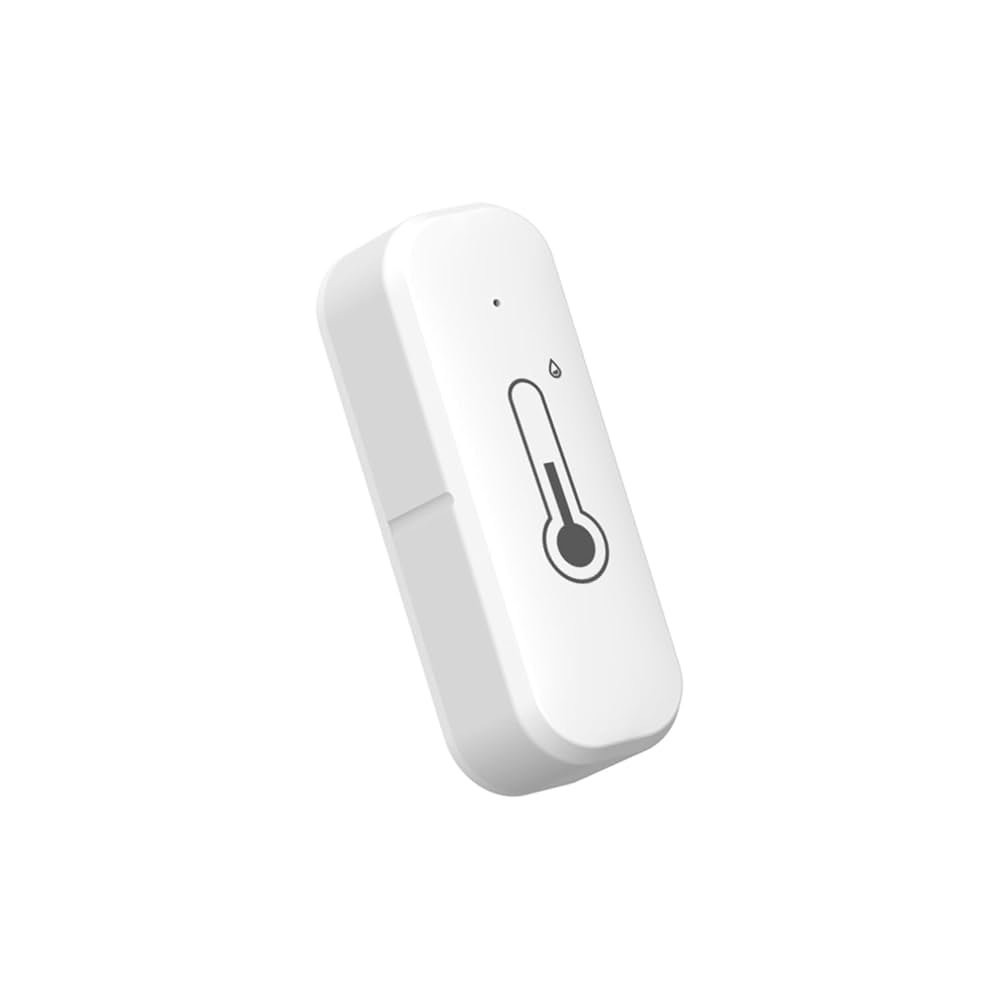Indoor humidity is the amount of water vapor in the air inside your home. It affects your health, comfort, and even your house. Too much or too little humidity can cause problems. But how do you keep it just right? Smart home technology can help you watch and control indoor humidity easily.
Why Is Indoor Humidity Important?
Humidity affects many things in your home. Here are some reasons why it matters:
- Health: High humidity can cause mold and dust mites. These can make you sick. Low humidity can make your skin dry and your throat sore.
- Comfort: When humidity is right, your home feels better. Too much moisture makes it sticky and hot. Too little makes it dry and cold.
- House damage: Too much moisture can damage walls, floors, and furniture. It can also cause paint to peel and wood to rot.
So, it is important to keep humidity in a good range. Experts say the best indoor humidity is between 30% and 50%.

Credit: www.mdpi.com

Credit: www.amazon.com
What Is Smart Home Technology?
Smart home technology uses devices that connect to the internet. These devices can talk to each other. You can control them from your phone or computer. Smart homes can make life easier and safer.
Examples of smart devices include:
- Smart thermostats
- Smart lights
- Smart security cameras
- Smart humidifiers and dehumidifiers
- Smart sensors for temperature and humidity
How Smart Technology Helps Monitor Humidity
Smart home devices can measure the humidity in your rooms. They do this with small sensors. These sensors send data to your phone or smart home system. You can check the humidity anytime, from anywhere.
Here is how smart technology helps:
- Real-time monitoring: See the humidity levels at any moment.
- Alerts: Get notifications if humidity is too high or low.
- Automatic control: Some devices can turn on humidifiers or dehumidifiers automatically.
- Data tracking: Look at humidity trends over days or weeks.
Types of Smart Devices for Humidity Monitoring
There are many devices to help you monitor and control humidity. Here are some common ones:
| Device | Function | Benefits |
|---|---|---|
| Smart Humidity Sensor | Measures air moisture in real-time | Sends alerts and data to your phone |
| Smart Humidifier | Adds moisture to dry air | Can be controlled remotely or automatically |
| Smart Dehumidifier | Removes excess moisture | Works with sensors to keep humidity balanced |
| Smart Thermostat | Controls heating and cooling | Can adjust settings based on humidity data |
How to Use Smart Technology for Better Humidity Control
Here are some simple steps to start using smart devices for humidity:
- Choose the right device: Pick a smart humidity sensor or smart humidifier/dehumidifier.
- Install the device: Put the sensor in a place where it can measure air well, like a living room or bedroom.
- Connect to your phone or smart home hub: Follow the instructions to link the device to your Wi-Fi and app.
- Set up alerts: Choose when you want to get notifications about humidity levels.
- Use automatic mode: If your device supports it, let it adjust humidity automatically.
By doing this, you get better control of your home’s air. It helps keep your family healthy and your house safe.
Benefits of Monitoring Indoor Humidity with Smart Devices
Using smart technology to watch humidity offers many benefits. Here are some you will notice:
- Improved health: Avoid mold, allergies, and dry skin.
- Energy savings: Smart devices work only when needed, saving power.
- Convenience: No need to check humidity manually with a separate tool.
- Peace of mind: Get alerts if something is wrong with your home’s air.
- Better comfort: Always keep your home feeling nice.
Common Challenges and How to Avoid Them
Even with smart technology, some problems may happen. Here are common challenges and tips to avoid them:
| Challenge | How to Avoid |
|---|---|
| Device not connecting to Wi-Fi | Make sure your Wi-Fi signal is strong and stable. |
| Wrong sensor placement | Place sensors away from windows, doors, or vents. |
| Ignoring alerts | Check and respond to alerts quickly to fix problems. |
| Not updating device software | Keep device software up to date for best performance. |
Tips to Maintain Healthy Indoor Humidity
Besides using smart technology, here are some easy ways to keep humidity balanced:
- Open windows to let fresh air in when weather is good.
- Use exhaust fans in kitchens and bathrooms.
- Fix leaks quickly to stop water buildup.
- Keep plants that help absorb moisture.
- Use a regular humidifier or dehumidifier if needed.
Final Thoughts
Smart home technology is a useful tool to monitor indoor humidity. It helps keep your home healthy, safe, and comfortable. With smart sensors and devices, you can watch humidity anytime. You get alerts when levels change. You can even control devices automatically. This makes it easy to fix problems fast.
Remember, good humidity means a better home. It protects your family and your house. Using smart home tools is a smart choice for many families. Try them and enjoy fresh, balanced air every day.
Frequently Asked Questions
What Is Smart Home Technology For Humidity Monitoring?
Smart home tech uses sensors to track indoor humidity levels automatically.
How Does Smart Humidity Monitoring Improve Air Quality?
It helps keep humidity balanced, reducing mold and dust mites indoors.
Can Smart Devices Alert Me About High Humidity?
Yes, many smart sensors send alerts to your phone if levels rise.
Which Smart Sensors Are Best For Indoor Humidity?
Look for devices with accurate sensors and easy app controls.

